The foundation of the collection was laid by the donations of the banker and industrialist Barthold Suermondt. In 1882, he donated a collection of mainly Dutch paintings from the 17th century to the City of Aachen. Further donations from Aachen's civic society increased the inventory, which today constitutes a comprehensive spectrum covering European painting from the 15th through to the mid-20th century.
The collection boasts outstanding works of late medieval painting from Germany and the Netherlands, as well as paintings from the "Golden Age" in Flanders and Holland.
The Master of the Glorification of the Virgin is definitely a highlight, while followers of Memling and the works of Albrecht Bouts testify to artistic development in the Netherlands. With three works, including the Cherry Madonna, Joos van Cleve represents the Antwerp school of painting. And the absolute masterpiece of the Early German section is Lucas Cranach's Judith with the Head of Holofernes.
The paintings from the 17th century are characterised by the profane iconography of the North, particularly the portraits, with Rembrandt's Portrait of a Young Man featuring prominently. The exhibition also encompasses excellent examples of genre painting like the Dutch painter Esaias Boursse's Boys Blowing Bubbles and the landscapes of the generation of painters following Jacob van Ruisdael. In terms of impressive still life painting, Willem Claesz Heda and Pieter Claesz are certainly the most outstanding masters of their art.
One of the major highlights of the collection is the Fall of the Damned by the Rubens pupil Jan Boeckhorst, a work that alludes to the counter-reformatory vigour of the South in Flemish painting. But there are also less ponderous subjects. For example, two paintings by Frans Snijders are based on books of fables, for example his The Rooster and the Diamond.
Individual masterpieces of Italian and Spanish painting like Jusepe de Ribera's Adoration of the Shepherds bear testimony to a European development, but also to the particular interest of the collector. Together with Dutch works, they characterise the profile of Aachen's Picture Gallery. The 18th century is represented by renowned masters like Januarius Zick.
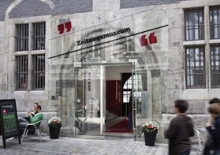
Medienmuseum, Wechselausstellungen und eine Sammlung von 200.000 Zeitungen und Druckwerken in nahezu allen Sprachen.
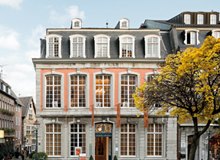
Das bekannteste Wohnzimmer Aachens, mit anschaulichen Einblicken in die Wohnkultur des 18. und frühen 19. Jahrhunderts.

UNESCO-Weltkulturerbe mit herausragender künstlerischer Ausstattung: Karlsschrein, aufwändigen Mosaiken, einer goldenen Altartafel.
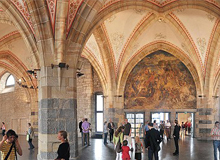
Die größten Historienbilder der Romantik, originalgetreue Kopien des Säbels Karls des Großen, einer karolingischen Handschrift, der Reichskrone.
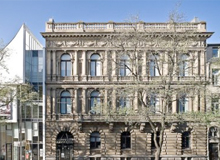
Kunst von der Gegenwart bis in die Antike, mit hervorragenden Gemälden und Skulpturen des Spätmittelalters sowie der Malerei des 17. Jhs.
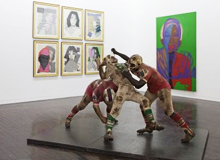
Schauplatz für zeitgenössische Künstler und Kunstwerke, Begegnungsstätte darstellender und bildender Kunst, Bestände der Sammlung Ludwig.
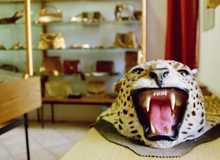
Lebendiges Zentrum zur Erinnerung der Grenzgeschichte und -geschichten, mit verbotenen Souvenirs und Schwarzbrennerei.
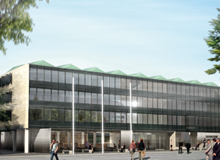
Eröffnung 2014 – Lebendige Geschichte von den Karolingern bis heute. Ausgangspunkt der Route Charlemagne am historischen Katschhof.

Stolz blicken die Aachener auf ihre Geschichte als römische Bäderstadt und Kaiserresidenz Karls des Großen zurück. Der Dom, 1978 zum ersten UNESCO Weltkulturerbe in Deutschland ernannt, und das Rathaus bilden den Mittelpunkt der Stadt. In den Gassen der Altstadt erzählen viele historische Gebäude von der lebhaften Geschichte der Stadt, und doch ist die Zeit nicht stehen geblieben.
An der „Eliteuni“ RWTH Aachen und den anderen Hochschulen sind rund 40.000 Studenten eingeschrieben. Das junge Leben pulsiert vor allem im Pontviertel, dem beliebten Ausgehviertel mit seinen zahlreichen Cafés, Kneipen und Restaurants. Doch auch in den Gassen und auf den Plätzen der Altstadt ist immer viel los. Rund um Dom und Rathaus laden zahlreiche Einzelhändler ebenso wie Filialen namhafter Häuser zum Bummeln ein.
Quelle allen Ruhms ist das Wasser: Die Heilkraft der heißen Thermalquellen war ausschlaggebend dafür, dass Kaiser Karl Aachen zu seiner Lieblingsresidenz machte. Die Badetradition wird heute durch die Carolus Thermen Bad Aachen weitergeführt.
Wer sich lieber in der Natur entspannt, hat dafür zahlreiche Möglichkeiten, etwa im nahe gelegenen Nationalpark Eifel. Zudem locken mehrere Theater und Museen mit einem vielschichtigen Angebot.

